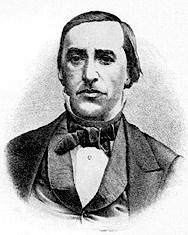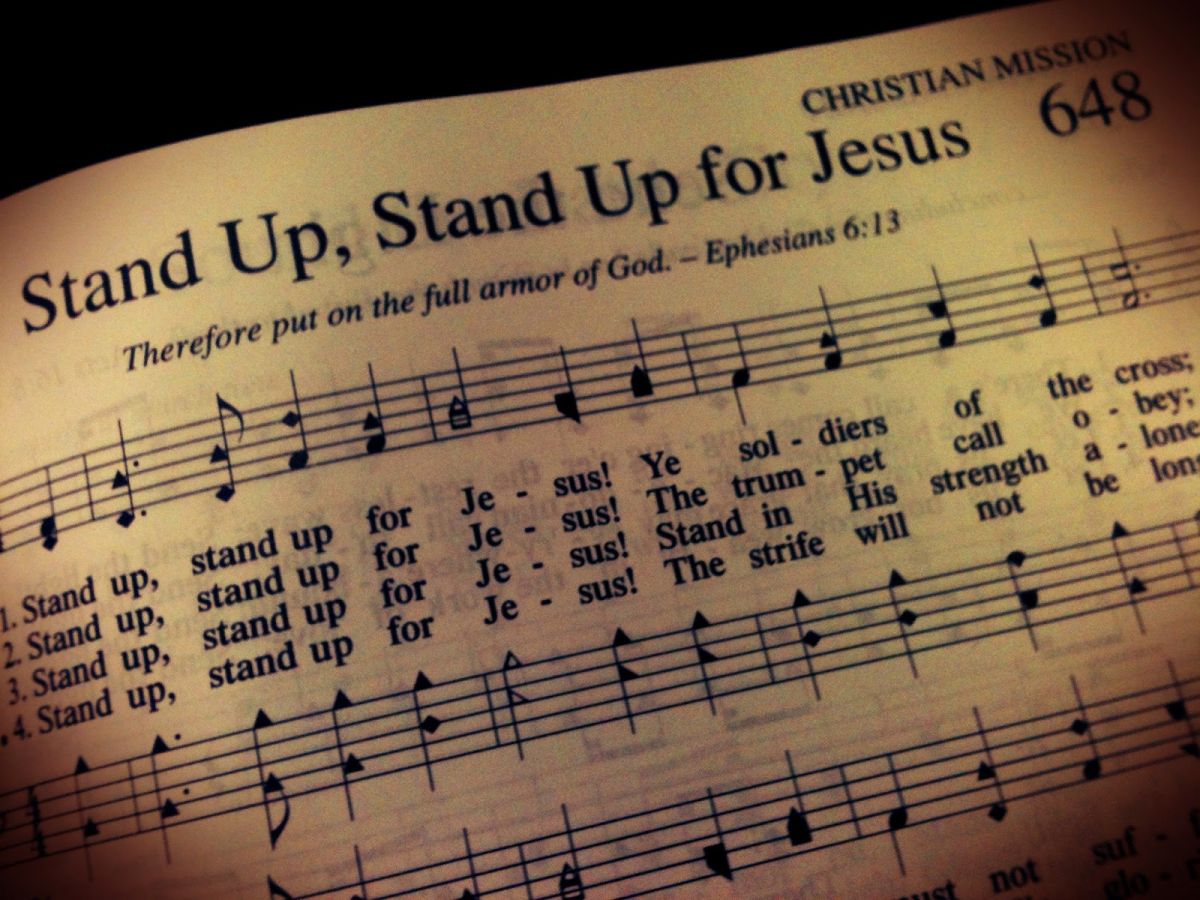
Not ones to shy away from controversy, in this post we’re looking at ‘Stand up, stand up for Jesus’ by George Duffield (1818-88) to the tune MORNING LIGHT by George Webb (1803-87). It remains one of the more divisive hymns in the canon, and for every person who believes there is no place for its militarism in Christian worship, there is another who thinks its resoluteness is just what the Church needs. It now exists in several bowdlerised versions – needless to say, we’re looking at the accepted original text which sufficed for over a century and a half.
There is no doubting that George Duffield (1818-88) had good intentions. A Presbyterian minister from Philadelphia, he was strongly evangelist and used his own money to support several small churches which would otherwise have closed. He also held the novel and contentious view that slavery should be abolished. Together with his friend Rev. Dudley Tyng – who had been removed from his Episcopalian position for his abolitionist stance – they spread the evangelical message all over Philadelphia. Tyng was the poster-boy of the movement, managing to convert 1000 men at one meeting in March 1858. At that event he said ‘I would rather that this right arm were amputated at the trunk than that I should come short of my duty to you in delivering God’s message.’ Of course, with due irony, only a few weeks later this same limb was caught in a threshing-machine, and Tyng died of the subsequent infection. Duffield was inspired by his friend’s last words – ‘Tell them to stand up for Jesus’ – to write this hymn, which so impressed the superintendent of Duffield’s Sunday School that he had it privately printed in leaflets. From here, it became popular on both sides fighting the American Civil War (Duffield was a Unionist), and found its way across the Atlantic, where it embodied the brand of muscular Christianity emerging in Britain’s public schools.
George James Webb (1803-87) was born near Salisbury in Wiltshire and studied the organ at that city’s cathedral, eventually gaining a position as organist in Falmouth, Cornwall. In 1830 he decided to emigrate to Boston, Massachusetts. On the long sea crossing he became involved in the ship’s entertainment and wrote a tune for the song ‘Tis dawn, the lark is singing’ which was performed in a musical revue on board. He founded the Boston Academy of Music with friend Lowell Mason – the father of American hymnody, who arranged ‘Joy to the World’ (after Handel) and composed the music to ‘Mary had a little lamb’, among others. Together they published the song in a collection of secular music in 1837. Five years later The Wesleyan Hymnal paired the tune with a hymn, ‘The morning light is breaking’, which gave the tune its title. It was finally published as the tune for Duffield’s hymn in 1868 – its marching style and strong, simple harmonies making this its most successful pairing of tune and text.
Rob Charles guides us through a solid version from All Saints, Oystermouth:
https://www.youtube.com/watch?v=3Ay3rb2Eq_U
Some rousing brass stops from Perth in Scotland:
https://www.youtube.com/watch?v=56YekOBqV50
And a striking piano and organ duet from Washington, North Carolina:
https://www.youtube.com/watch?v=U_-l0bLb2f0
This post’s descant and alternative harmony make use of augmented and diminished chords, inversions and suspensions. So plenty for an organist to get their teeth into, and the sopranos have a countermelody that reinforces the diminished sevenths particularly. As ever, it’s free to download and use, so please do so, and let us know how you get on. And we’d be delighted to receive any audio or video of your attempts.
If you’re using George Duffield’s hymn in a lesson, try considering the following points:
- The story that inspired the text of the hymn.
- The idea of Christians as fighters, and whether this can be reconciled with the ideas of peace and brotherhood.
- The softening of the text by modern editors – in particular, Jean Holloway’s version in Hymns Old and New.
- The regular metre of the text (76.76.D), how this reinforces the main theme, and the suitability of the music in reflecting this.
- A comparison to other hymns with similar themes, such as ‘Onward, Christian soldiers’ (Sabine Baring-Gould), ‘Soldiers of Christ, arise’ (Charles Wesley), or ‘Fight the good fight’ (John Monsell).
Does this hymn stir you into righteous action in God’s name? Or do you think its sentiments are anachronistic and outdated? As ever, do let us know your thoughts, share them in the comments section below.

